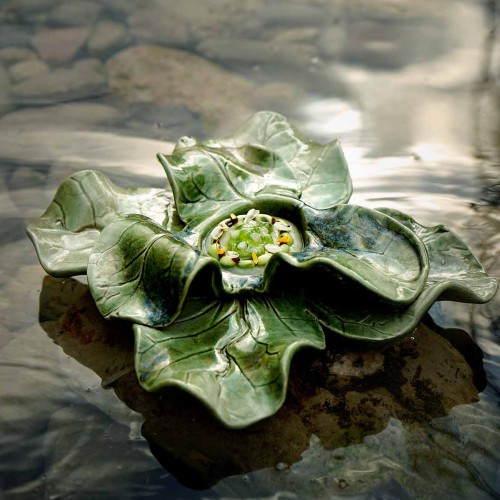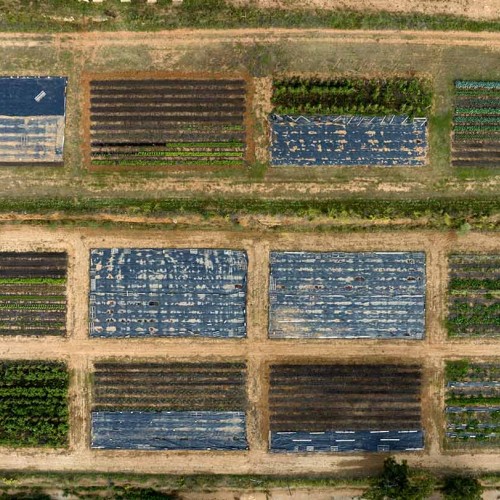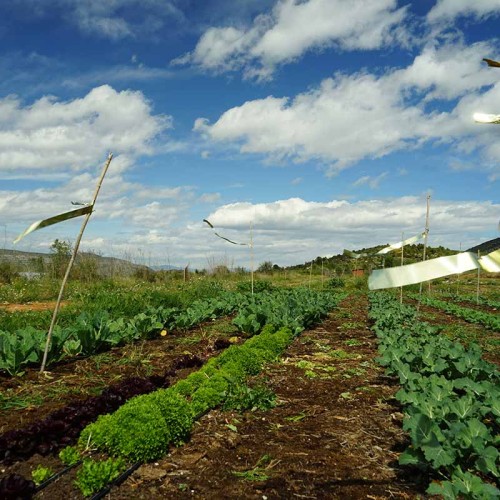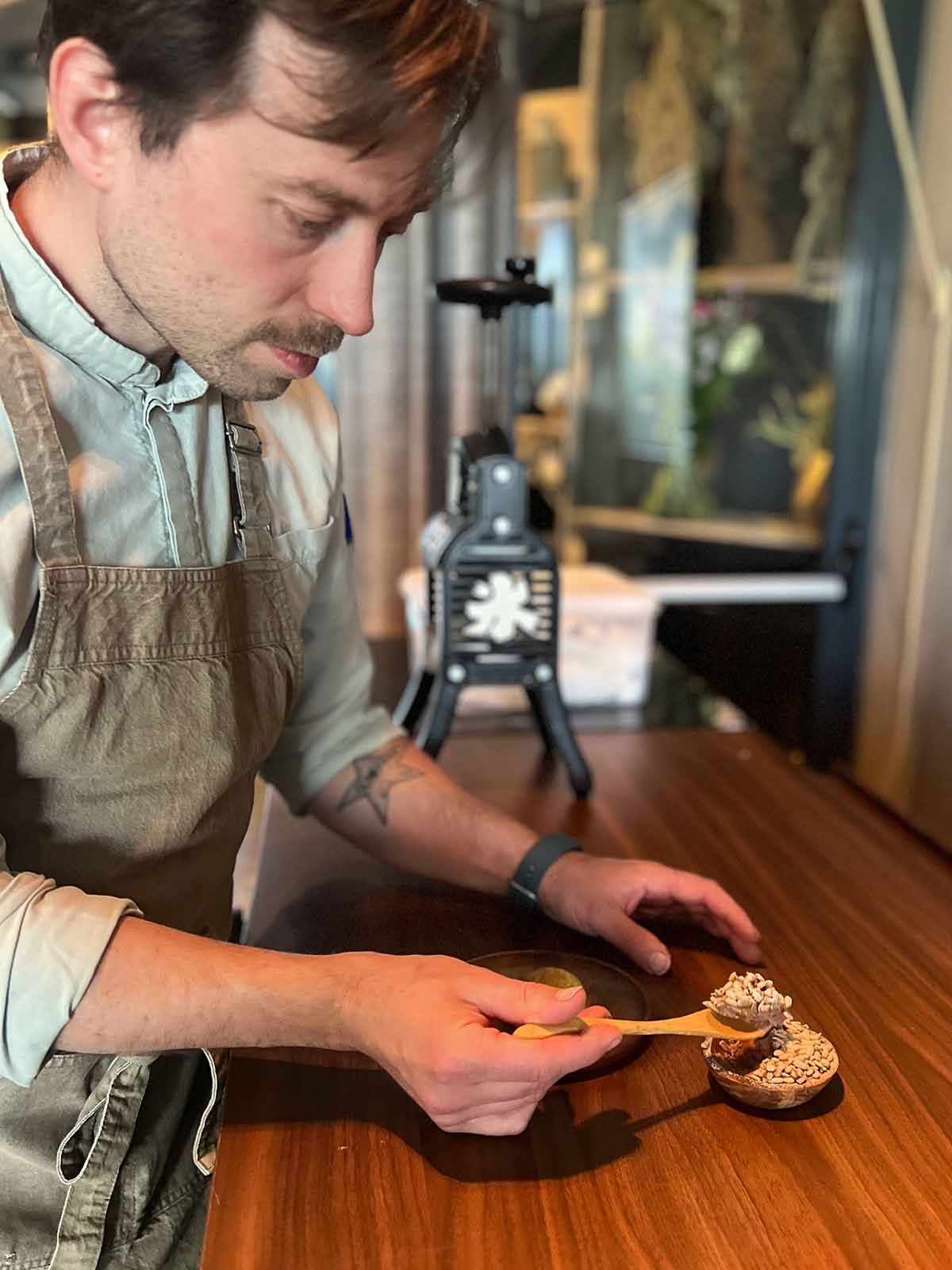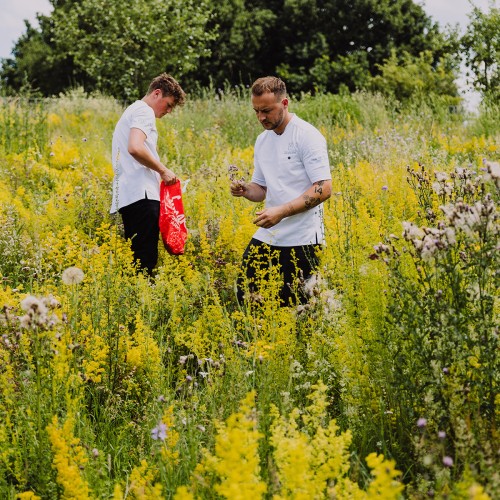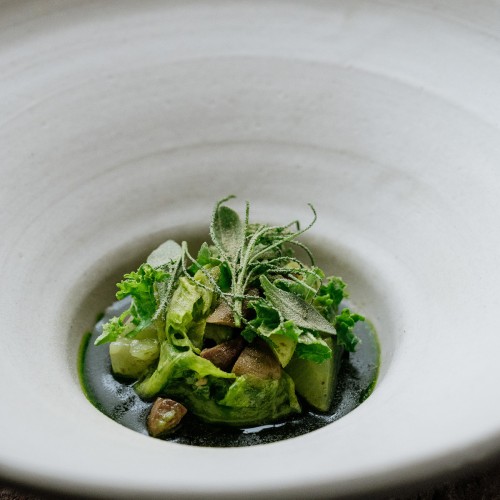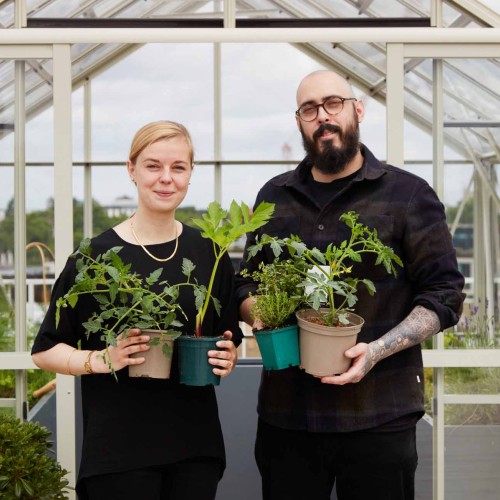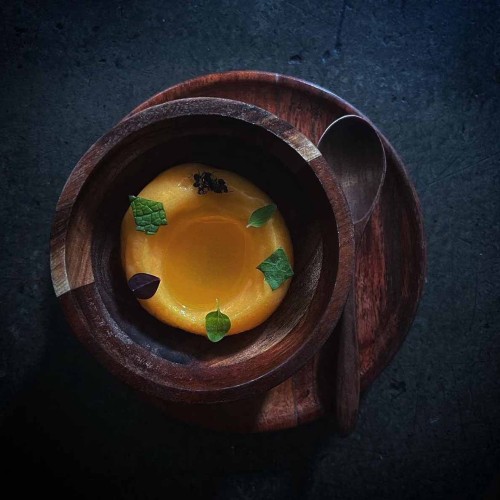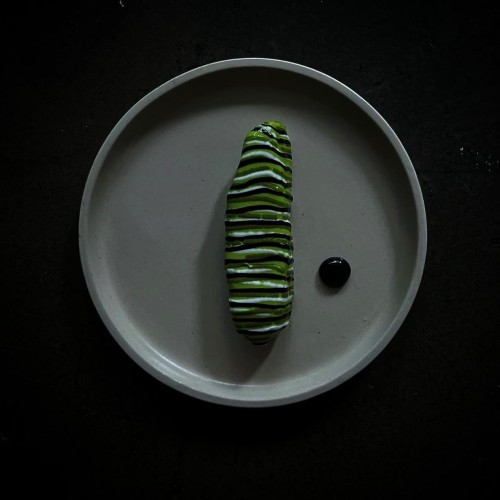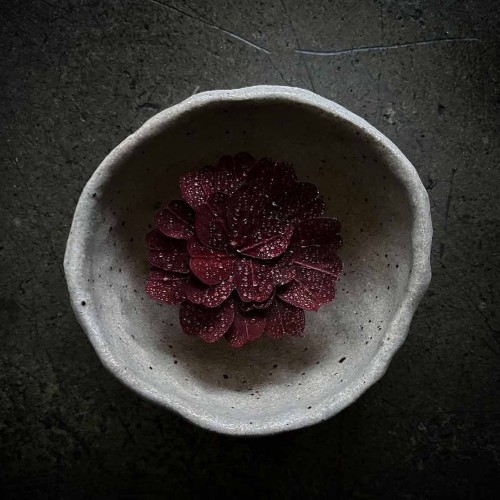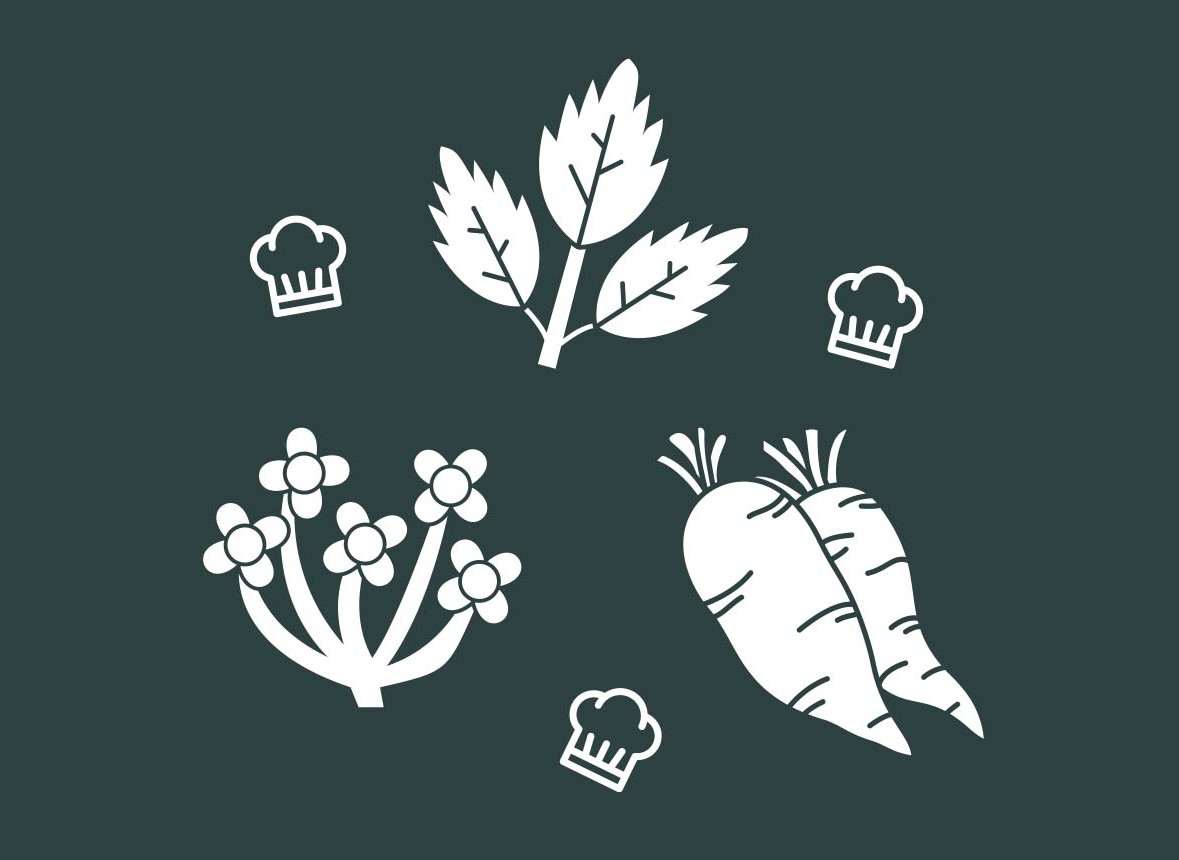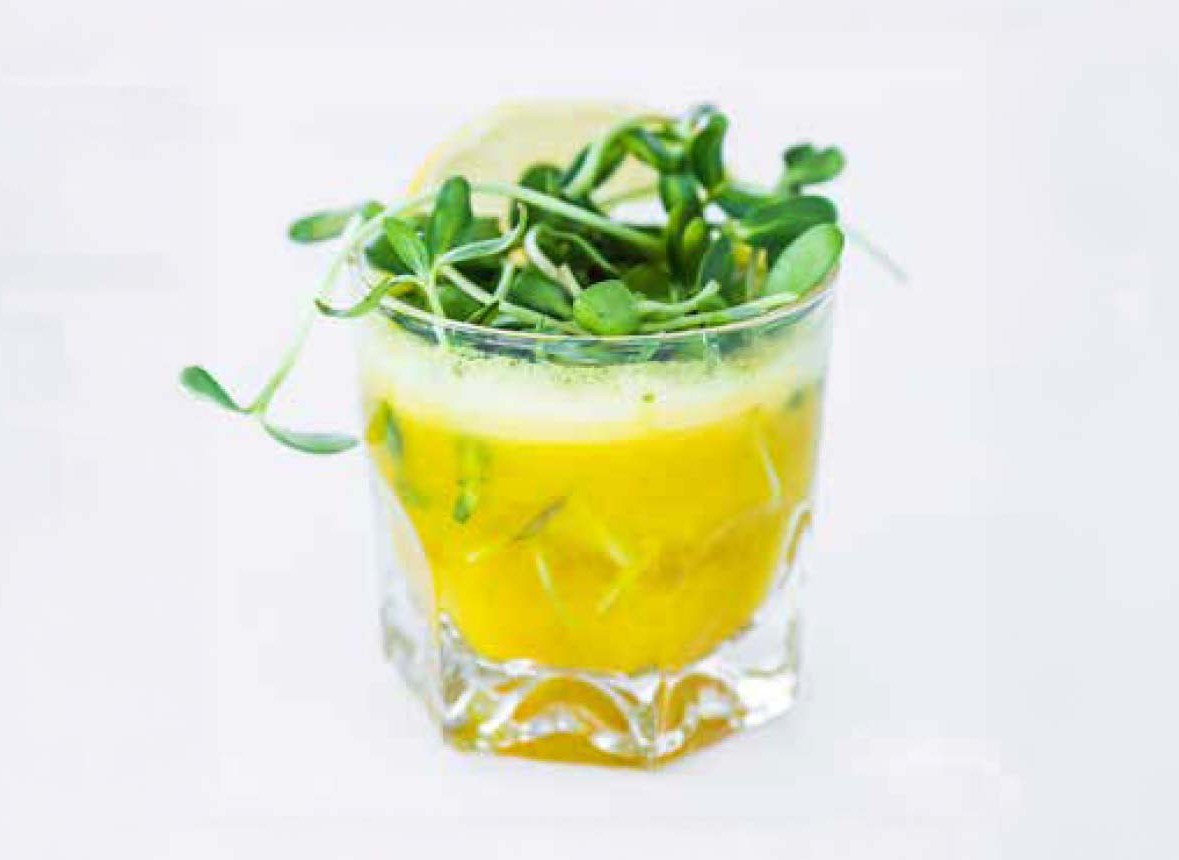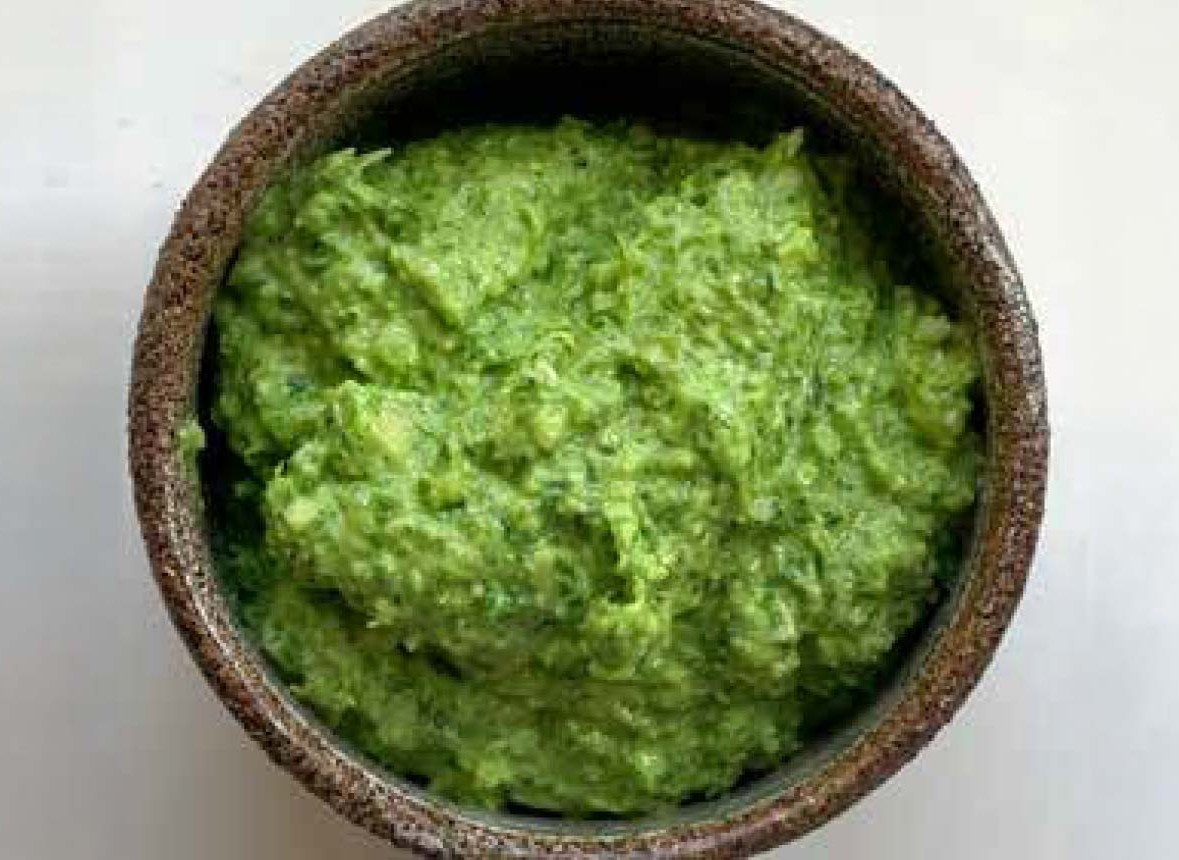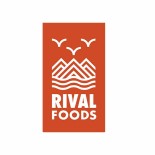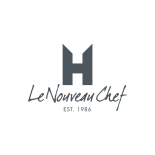Menu’s dictated by the rhythm of the garden
Across the globe more and more chefs grow vegetables, and farmers start creating dishes. It sparks creativity, experimentation, and a different way of working. For sure it gets you noticed by our inspectors, take a look at our criteria for receiving the highest accolade. Our editor Sheila Struyck jumped into the world where nature is king. She interviewed chef / owner Vicent Guimerà of L’antic Moli in Spain about his ‘project Mans’, a collaborative circular initiative. Owner Reinier Kempenaar and chef Martijn Koeleman of De Dyck proudly showed her around their farm turned restaurant in the vicinity of Amsterdam. Both are four radishes restaurants (and with a green Michelin star). For all chefs that can’t afford a huge piece of land, we collected inspiration to work closer to nature with local producers from Les Cols, Basiliek, Anglo, La Madernassa, ‘t Aards paradijs and Sanaburi.
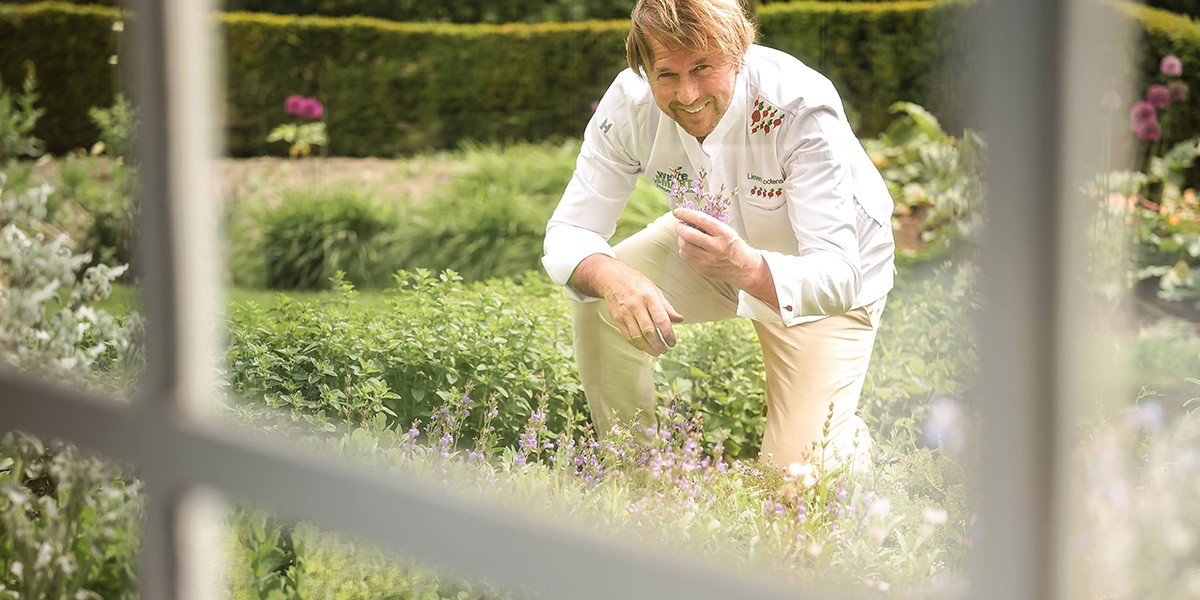
L’ Antic Moli – We get excited by the flavors of each season.
In Ulldecona, 110 km South from Tarragona, lies l’Antic Moli (four radishes). Chef turned farmer Vicent Guimerà explains: “We make sustainable use of our farm's resources. We do it, not for ourselves but for future generations. Sustainability is a "win win" for everyone and especially for nature”. In this short video you can meet the chef, his garden, collaborators and his project “Mans”
"Promote small farmers in your area. Give importance to everyday products and give them a life of greater value." Vicent Guimerà of L’Antic Moli
“I wanted to create a more sustainable future for the restaurant. Since I don’t like to work alone and love this area and our land, we collaborated with local producers and artisans. So we created “project Mans”, a circular economy endeavour. My family used to own land, which was farmed in the past, but had fallen in disarray. A great canvas to create 7000m2 of natural agriculture to reverse climate change with the restoration of organic matter. We use everything it produces. The organic waste generated in the restaurant becomes worm humus, very rich food for future crops in the garden. Our seventy chickens are fed by vegetable scraps from the garden and the kitchen. This symbiosis helps us to combat diseases and pests in the garden, and we grow delicious fruits and vegetables. We even created jobs, with Terram Cooperative we promote social and labor employment for vulnerable groups”.
What does this mean for your menu?
“Our philosophy is: ‘The world that returns’. We only use what the garden and the orchard offer us, in the right season. This makes us value everything that grows and automatically make vegetables the star of our dishes. The menu is nourished by the rhythm of our farm. The dishes go hand in hand with the cycle of nature. The brigade continues to create new ideas and get excited about the flavor of each season”.
How do you manage guests who believe “customer is king” while nature can be fickle?
Of course we love to see guests leave the restaurant happy and satisfied. We offer a unique experience but can’t control the over-expectation of someone. By transmitting the love and passion through our cuisine and dishes, we hope the guest feels that. The front of house has an important role to act as a mediator between the kitchen and the customer. They tell our story”.
Beginnings and start-ups are hard work, right?
“We work hard to have a more stable and continuous harvest. In the beginning, it only cost us money and we did not see any fruit”. But we persisted, we must. It is a path towards more productive and resistant lands to face the droughts we are experiencing. We have also started to recover forgotten seeds. With every seed we find a story and think about future generations.
Photocredits : l'Antic Moli
Grandfathers ultraspecialised potato farm de Dyck became a selfsufficient restaurant serving 150 different plants from its garden.
The grandfather of Reinier Kempenaar, owner of De Dyck (4 radishes), operated a mixed smallhold right after WW II. His father stopped with dairy cows and specialised in potatoes and flowers. Kempenaar ended the worldwide export of sunflowers and started a restaurant in the farmhouse.
A farmer turned chef, how come?
“Martijn Koeleman is the chef, I am the farmer, haha. I wanted to cater for the people close to the farm, not for anyomous customers around the world. So we started a restaurant on the farm, to provide the larger Amsterdam area with fresh food and a wonderful dining experience. It grew step by step and in the 5000 hectare garden we went from 2 or 3 different crops to 150! The garden does not only supply the restaurant we also offer local people the opportunity to harvest for their weekly needs. And we continue on the selfsufficient road. ‘Buitengewone Biggen (extraordinary pigs), located free roaming pigs with us. The piglets from one litter are kept together, they live a happy life on our land and eat our organic waste and fertilize the land. We get paid to feed and take care of them. We proudly serve their meat on our menu.
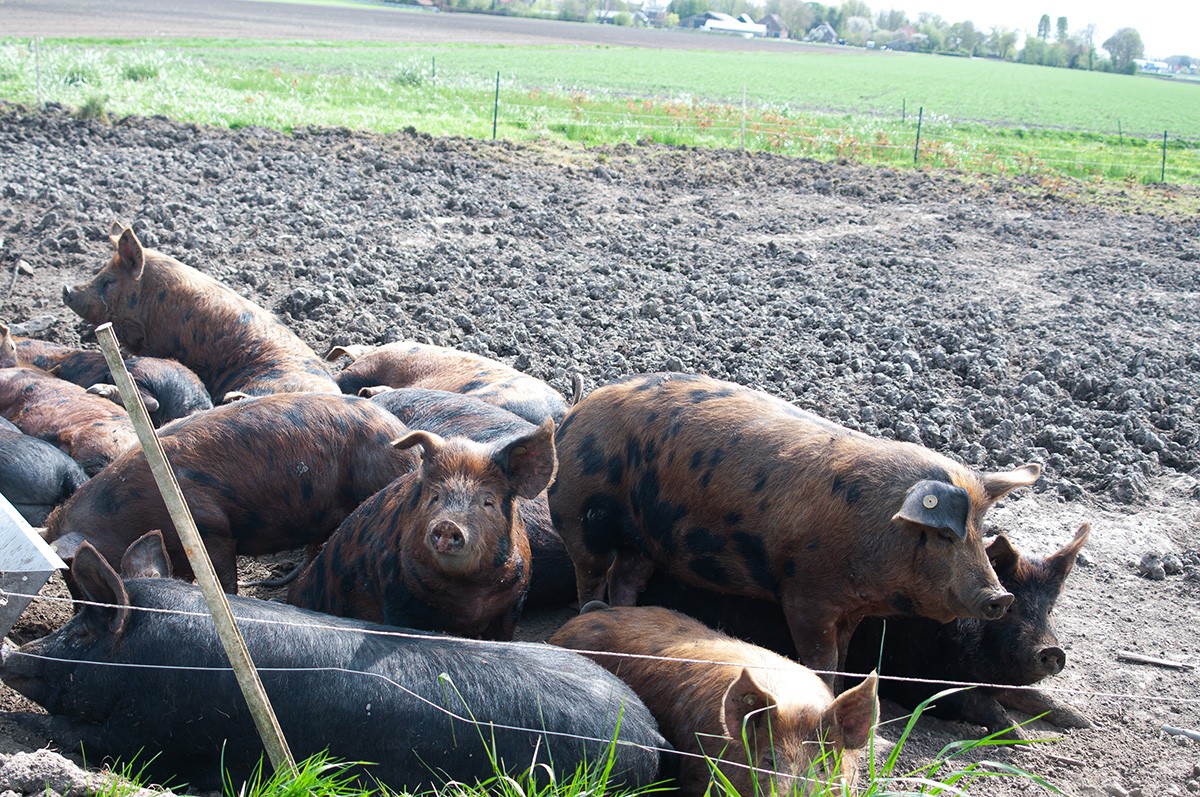
What is the dish that best expresses ‘de dyck’ on a plate?
“Vegetables and fruits are the heart of our dishes. For example the “capucijner”. These marrowfat peas aka capuchines are a heritage legume which my father already grew. Ignored for a long time and now slowly getting back on our plates”. Koeleman adds: “And we use this for our skewer of pointed cabbage, we create a new variation every year! A 100% dish with our own ingredients in winter! All elements have been fermented, hydrated, smoked and preserved here. This year it comes with pine, sweet and sour rosepetals and a ‘ketjap’ of these capucijners.
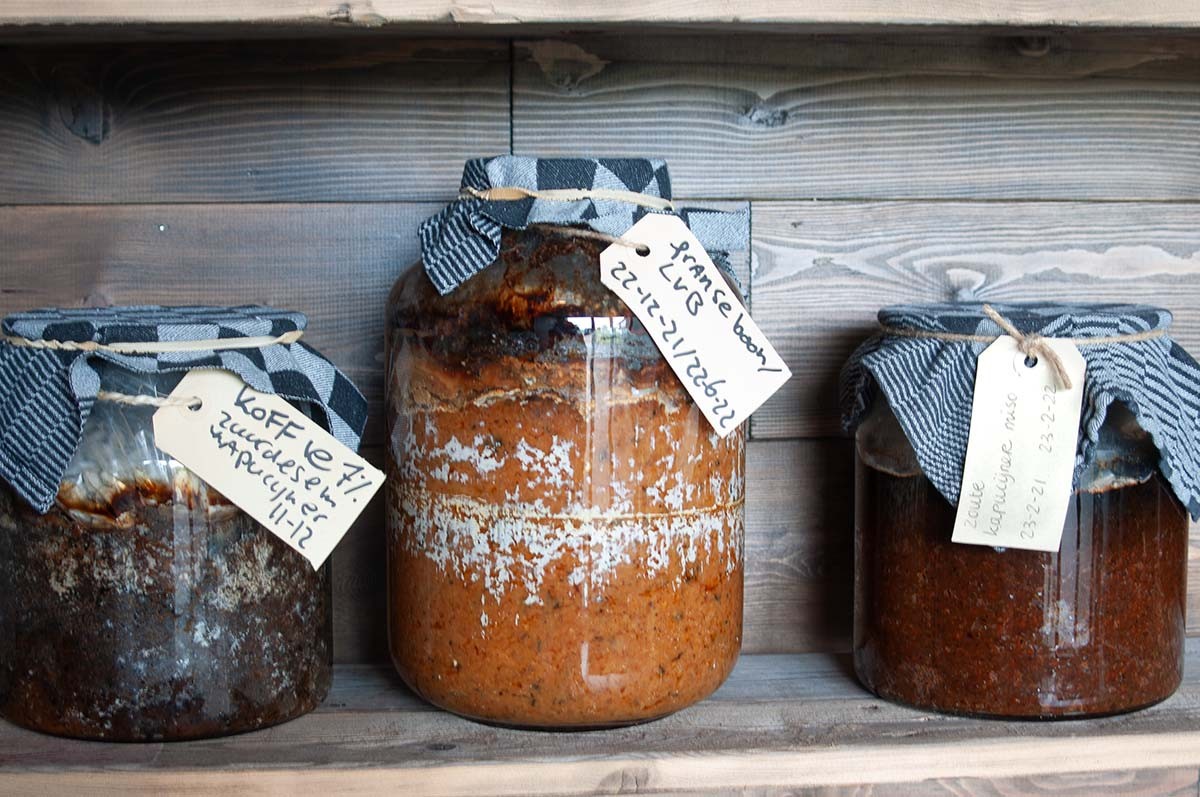
"We need to seduce people to leave the city and make the trip to the countryside, to the farm." Kempenaar of De Dyck
Farm to plate, six inspirational chefs show how to get closer to the source.
Many chefs have a penchant for fresh, local, organic and seasonal. It is a journey of creativity and magic. They accept that “nature is the true artist and not the chef”, like Marco Pierre White famously said. Here are some great ideas from around the world to bring the garden and nature closer to the dining room.
Treat your surroundings as your own larder – Basiliek (Nl)
The team of Yornie van Dijk forages in the surroundings of Basiliek (5 radishes) in such a way that the full botanical drinks offering is ‘self harvested’ and treated with ancient techniques like fermenting, pickling and preserving. Herbs are harvested in neighbouring gardens. Dairy comes from the farmland next to Harderwijk and most fish used is sourced in the IJsselmeer, at 500 m from the restaurant. This is a strong fundament under the clean and fresh signature of this young and talented chef.
Photo Yornie van Dijk - photocredits Food Reporter
Photo Plate Basiliek - photocredits Janne Lieke Visuals
Embrace local and indiginous produce as the centre of your signature – Les Cols (Sp)
As part of the tasting menu, the guests at les Cols (4 radishes) are invited to enjoy some appetizers in the kitchen. A great moment to meet the chefs, and smell the professionalism. These are the ‘buckwheat’ creations. Once the staple for all in this volcanic region, and now almost not grown anymore. By featuring it prominently, the humble buckwheat returned to the fields of Olot. From your table you can see the chickens. They improve and fertilize the soil. In order to close the circle there is always a dish that celebrates ‘egg straight from the henhouse’ in the degustation. Nothing goes to waste.
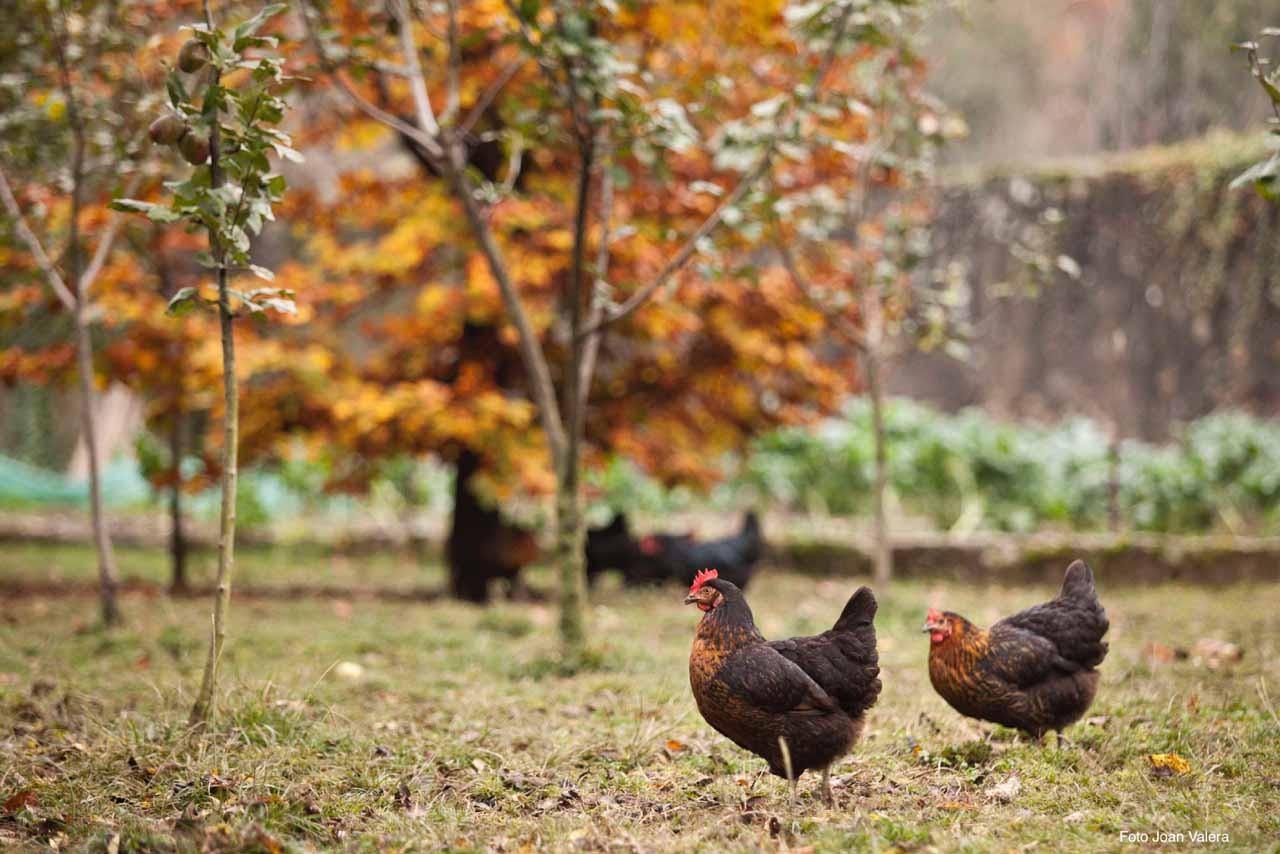
Even in the heart of London you can forage and work directly with producers – Anglo (UK)
Chef Anthony Raffo is a real minimalist, focused on regional products and flavours. His carefully crafted menu at Anglo (3 radishes) tells you exactly where he is from (Hampshire) and which season it is. Seasonal foraged, responsibly farmed and buying directly at the source. Even the French sommellier exels with British natural and sparkling wines. In the middle of a very urban envrionment Raffo focuses on his own nature and terroir.
Credits: Photo’s courtesy of Anglo restaurant
Use microherbs to create magical flavours in winter- La Madernassa (It)
La Madernassa (5 radishes) sits in a resort with 15 000m2 of orchards, vegetable gardens, vinyards and greenhouses. These flavours and products are the heart and soul of the menu of Chef Giuseppe D'Errico. “In summer it is easy to rely on the garden, but in winter we purchase from suppliers with constant, continuous, and ethical production. When essential elements like the bitter and spicy notes of dandelion, dill, nasturtium, sea fennel, and samphire are missing in the garden, we compensate with products such as Paztizz Tops, Zorri Cress, Sea Fennel, and Salty Fingers."
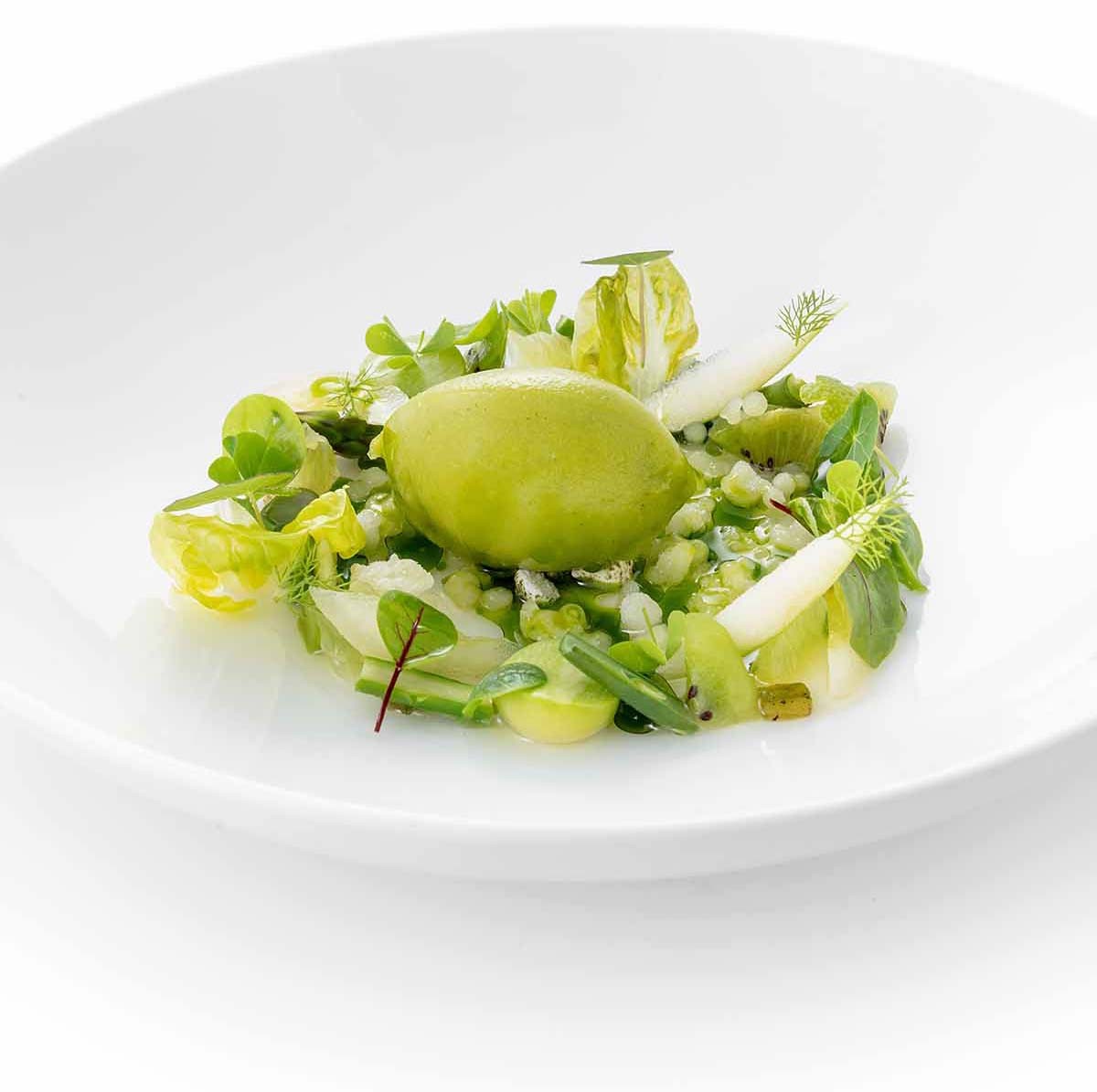
Discover all of the sense of nature with a horse and carriage – ‘t Aards Paradijs (Be)
Lieven Lootens, chef at “t’ Aards paradijs’ (5 radishes) in Deinze (Belgium) gets the inspiration for his seasonal dishes from nature. Next to growing their own herbs and flowers he created a small ecosystem with local foodforests, regenerative farmers and orchards.
Ofcourse you can come to t Aards Paradijs all year round to enjoy an everchanging menu that follows the seasons. In spring something special happens, you can book for an exclusive experience called “Quest of the Senses” (Ontdekkingstocht Der Zintuigen. With a horse and carriage Lootens takes you to a herbgarden, a bio farm and a food forest. Then to the orchard and vegetable garden, where everything you have gathered is prepared on a fire. You can taste fermentations and other preparation.
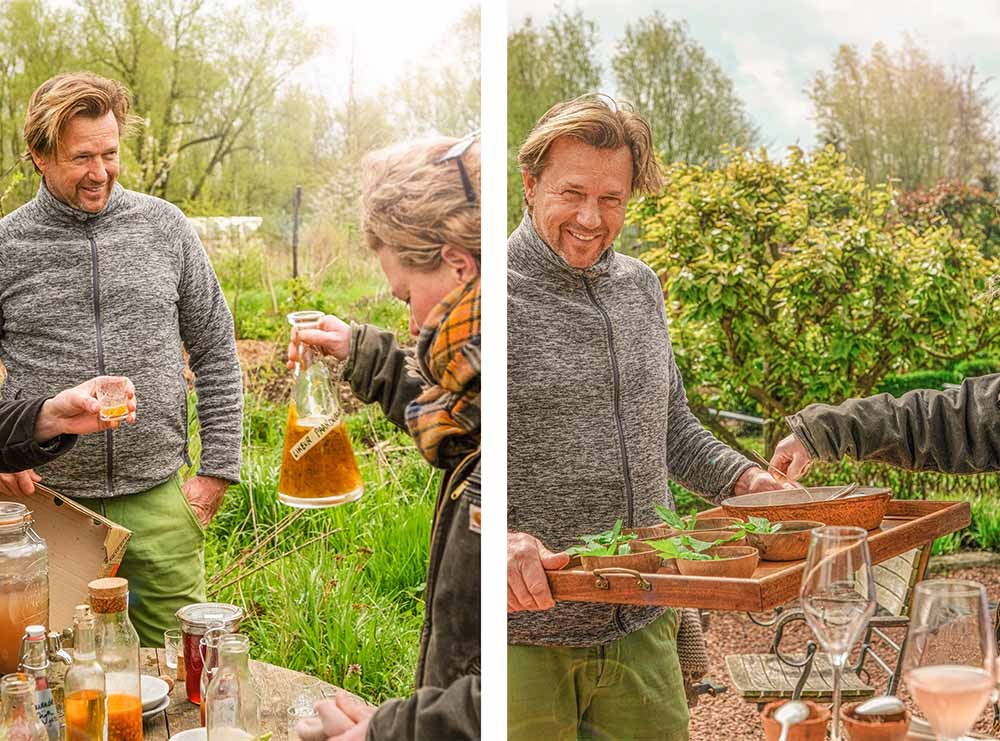
Keep notes of all your creations, some ingredients are only there ten days per year - Sanaburi – (Jp)
Keiko Kuwakino (best 'vegetable lady-chef of 2023) is headchef of Sanaburi (5 radishes). She works with what the mountains can give her. "We anticipate the seasons. It snows in our village for four months a year. The first winter I was here, I had nothing more than some tubers and root vegetables to cook with. Now, I spend the whole year working on my winter mise-en-place. In the spring, I ferment many of the fresh herbs that are abundant in the fields. And in the summer, we build a two-meter high pyramid, which acts as a kind of pantry for extra food for when the snow arrives. I often work six to twelve months in advance. Some fruits, plants and herbs are only available ten days a year. Then their peak season is already over. That means I can only work with it a few times a year. I look back at my recipes and notes from last year and then try - in the short time I have - to explore the flavors and possibilities of those hyper-local hyper-seasonal ingredients even further."
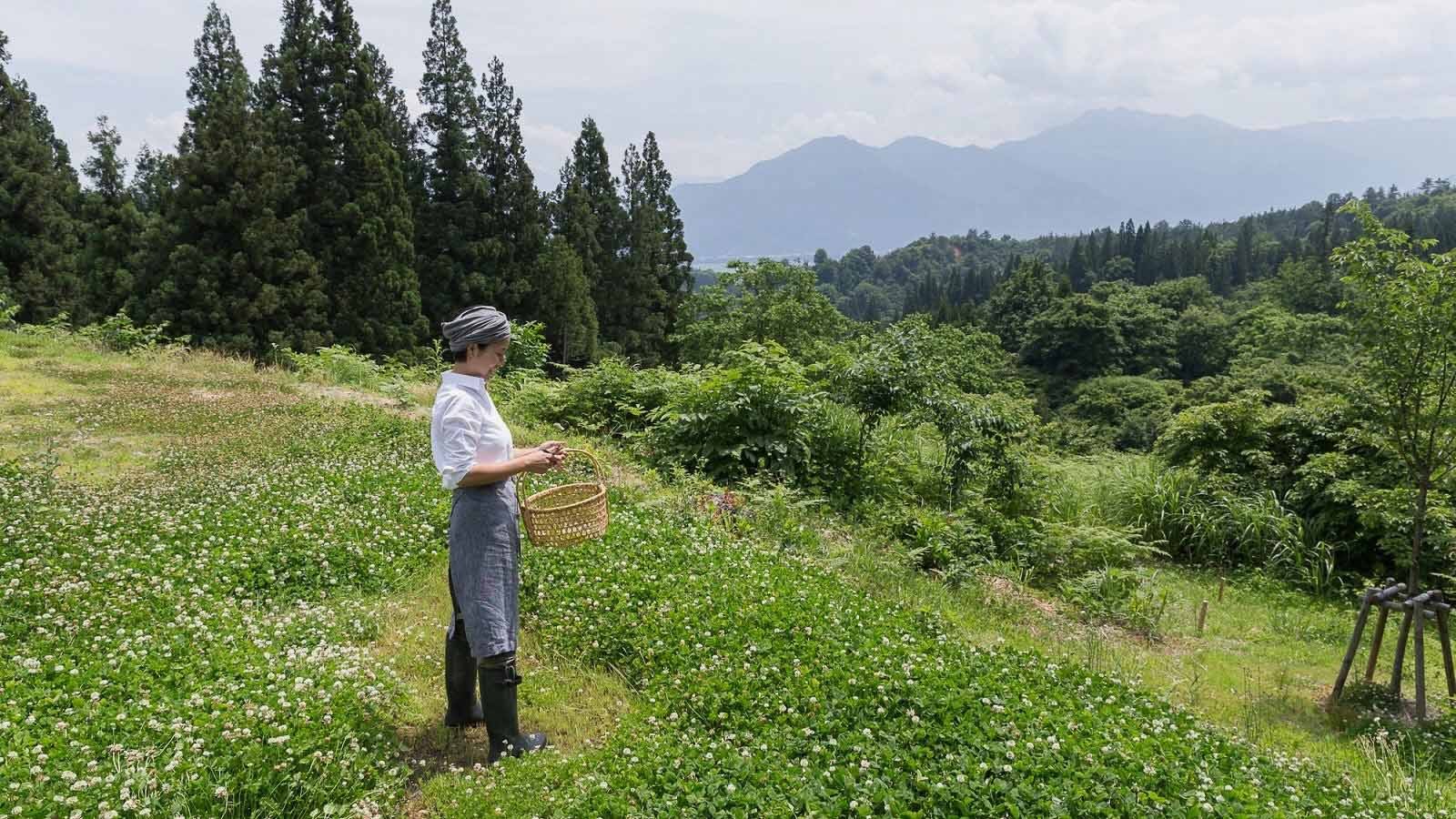
Have you discovered a restaurant that puts vegetables and fruits central to innovative dishes? That work in close realtion with local producers, love the seasons and hate to waste food or plastic? Let us know! We are always eager to meet new talents
